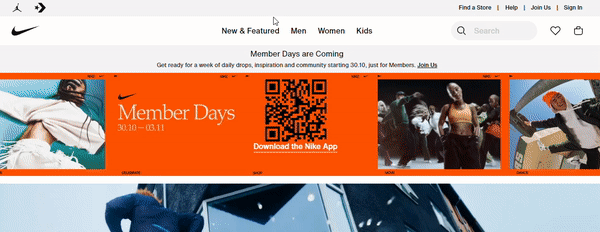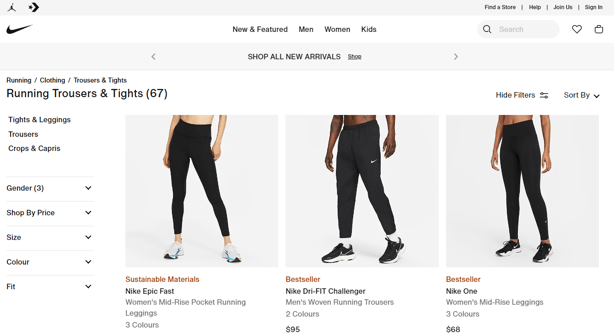SEO as a strategic lever for the customer journey
The terms "customer journey," "user experience," and "SEO" are common in the vocabulary of marketers and in the digital sphere. However, it is less common to associate the customer journey with SEO. In the era of personalization and data exploitation, a more significant opportunity than ever presents itself to establish a closer connection between these two concepts.
The goal is simple: to understand the user well in order to offer what they need at the right moment. SEO plays a crucial role in fulfilling this promise, especially in a context of data loss with Law 25.
But how can we make SEO a strategic lever in the customer journey?
Customer Journey and SEO: Understanding Their Operation
The customer journey details the user's actions before, during, and after purchase, comprising several phases.
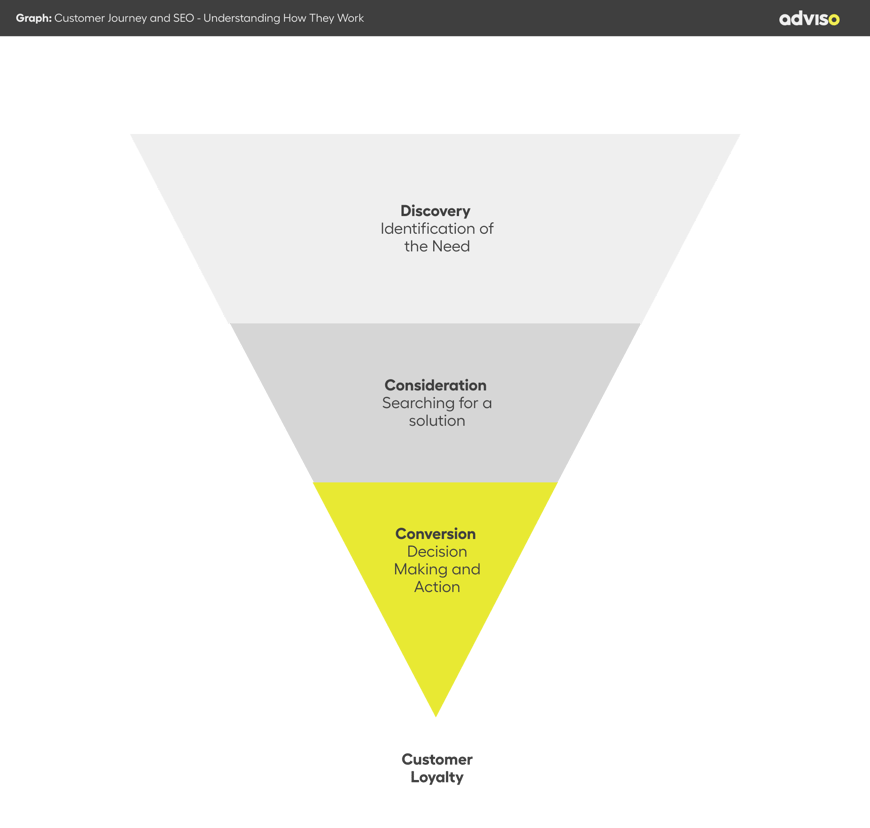 1. Discovery Phase (Top of the Funnel)
1. Discovery Phase (Top of the Funnel)
The user becomes aware of a need, and we aim to guide them to better understand it.
SEO: At this stage, the user conducts broad informational and generic searches without showing interest in making a purchase. The search intent is informational.
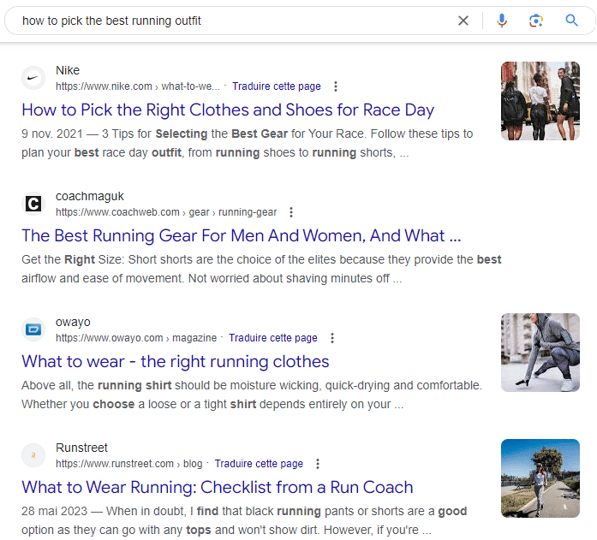
By analyzing searches on Google and other search engines, we can get a detailed idea of the questions the customer has at this stage of the journey and respond with appropriate and informative content (blog article, video, questionnaire, guide, etc.).
2. Consideration Phase (Middle of the Funnel)
After identifying their need, the user conducts specific searches for a product or service, indicating progress in the conversion journey, and we aim to guide them towards the best solution.
SEO: At this stage, queries can be divided into three distinct intentions: decisional queries, which help guide a choice (e.g., "best marketing agencies" or "iPhone Pro vs. iPhone Pro Max comparison"); navigational queries, which include brand names (e.g., "SEO Agency Adviso" or "Nike running clothes"); and commercial queries, which show an interest in conversion (e.g., "marketing agency" or "running equipment"). These queries can be formulated in a generic or specific manner.
It is crucial that the user easily finds what they are looking for:
- Either on search engines with pages such as product categories or content hubs.
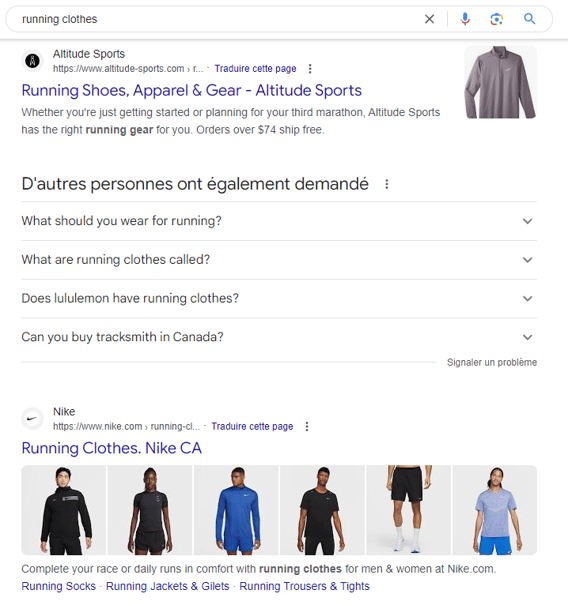
- Or on the site if they entered during the previous phase, with clear titles in the menu and hierarchy that match the queries searched by target users.
3. Conversion Phase (Bottom of the Funnel)
The response to the need is clear; the user is looking for a specific product. We want to reassure them, strengthen their choice, and convince them.
SEO: At this stage, queries are also decisional, navigational, commercial, or transactional, revealing the intention to convert. Queries are specific, for example: "SEO agency Montreal," "women's running pants," "Samsung Galaxy S21 refurbished."
Similar to the previous phase, it is important that the user easily finds the product or service page they are interested in:
- Via search engines with attention-grabbing and reassuring results.
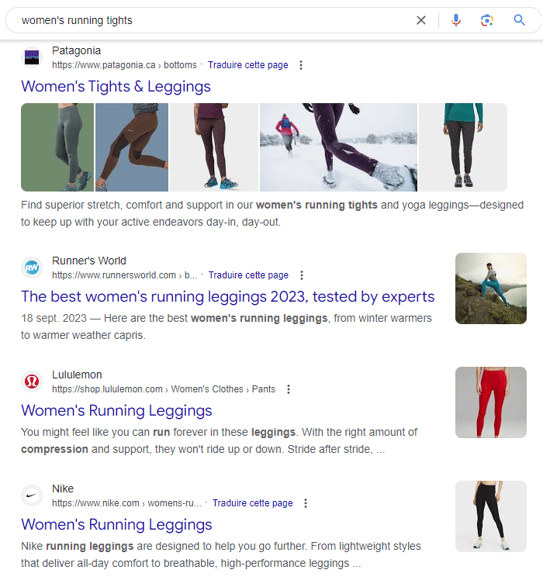
- Via a clear hierarchy and relevant category pages.
Beyond keywords, SEO through semantic analysis can help identify elements that matter to the user to highlight them on the website (product features, service details, etc.).
4. Post-Purchase and Loyalty Phase
The conversion is completed, loyalty strategies are implemented, and SEO continues to be useful for other challenges:
- Contact details (Google Business Profile),
- FAQ or informational content for retargeting (emailing, social media),
- Post-purchase support (product usage guide, educational videos, tips).
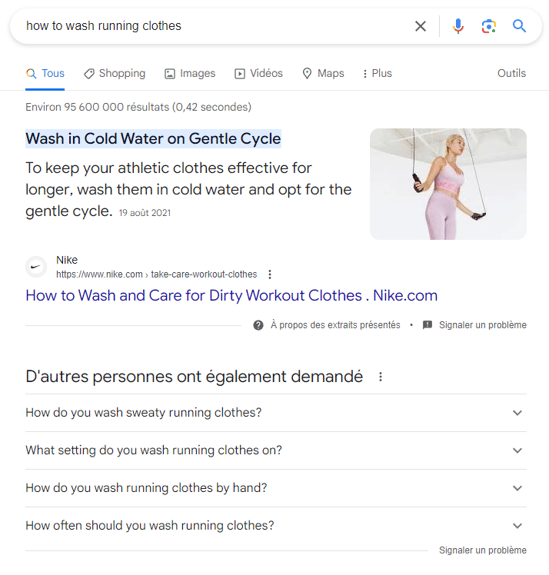
The goal is also to transform customers into brand ambassadors to increase the site's authority with Google and its industry. Reviews, testimonials, backlinks are criteria for "natural popularity" valued to advance a website within search engines.
More Relevance for More Performance
Integrating SEO into the customer journey means ensuring the relevance of the offer by providing the right content at the right time. Various aspects need to be examined to assess its impact on performance..
Performance Indicators to Monitor
By considering the search intent expressed through Google and the customer's maturity in their journey, the content will become more relevant to users and have a better chance of ranking at the top of search results.
- A higher organic click-through rate on your website links.
Source: backlinko.com
- More Qualified Traffic with Improved Engagement Rate and Consistent Engagement Duration (Browsing Time)
- According to the Page Type (Product Page, Blog Article, etc.)
The Top of the Funnel, Supporting the Bottom of the Funnel
Bottom and middle-of-the-funnel pages often play an indirect role in revenue-generating conversions (online purchase, reservation, quote request, etc.). Their impact is generally reflected in the following elements:
Increased Natural Traffic
Top-of-the-funnel pages attract a broader audience likely to continue their journey down the funnel. The main advantage lies in awareness and presence.
A Nielsen study has shown that strengthening brand awareness and consideration leads to increased sales.
Better Positioning and More Qualified Traffic
The quality of a site and its content is evaluated based on the "E-E-A-T" (Experience, Expertise, Authoritativeness, and Trustworthiness) criteria. Informational content demonstrates your expertise in the subject and supports your experience (e.g., product usage guide, case studies), reinforcing credibility by increasing opportunities for link shares from other sites.
Highlighting Transactional Pages
Top-of-the-funnel pages create links to category and product pages. An effective linking strategy enhances the visibility of strategic pages and, consequently, can contribute to increased conversions through qualified traffic. It is also essential to note that newsletter sign-ups or form submissions are forms of conversion that can result from informative content.
Measuring Impact on Conversions
Working on the entire customer journey, from top and middle-of-the-funnel pages aiming to multiply entry points to bottom-of-the-funnel pages, improves ROI by 45% compared to an approach targeting a single purchase stage, according to a Nielsen meta-analysis. To assess the effectiveness of an SEO strategy aligned with the customer journey, the use of a causal impact method is recommended. Unlike traditional attribution models, causal impact analyzes the relationship between marketing actions and performance, allowing the evaluation of their impact on conversions and generated revenue.
Implementing SEO in Practice
Identifying Content Gaps: Our Website versus the Market
Comparing the content on our website to market demand helps identify opportunities for optimization and page creation. This is always with the aim of offering content tailored to each stage of the customer journey.
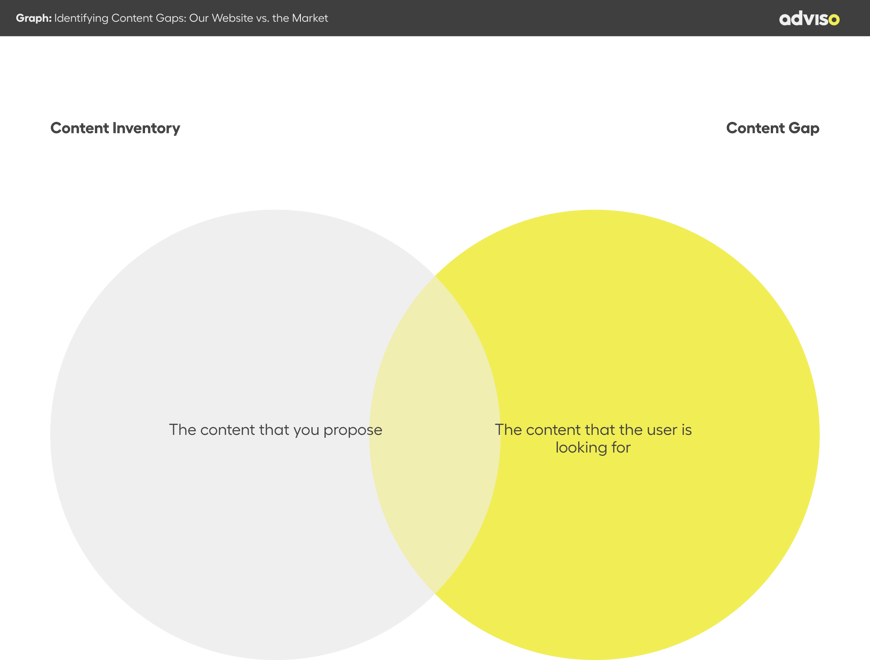
Several observations are possible:
Observation 1: I have an existing page that addresses a search intent, well-positioned (no action required).
Observation 2: I have an existing page that addresses a search intent but is poorly positioned (needs optimization).
Observation 3: I have an existing page that does not address the right search intent (requires optimization by revising the content focus).
Observation 4: I have two pages addressing the same search intent (need to merge or optimize both pages to address distinct intents and avoid the risk of cannibalization).
Observation 5: I do not have any pages to address a popular and relevant search intent for my business (requires page creation).
Depending on the depth of this analysis, it can also help determine the right content formats based on search intent and customer maturity stage.
Thinking About the Site Structure
Integrating SEO into the construction of the site structure involves considering user search intentions and keywords based on their maturity to organize content, name pages, and define URLs.
This will have the following effects:
- Better positioning through a deeper understanding and optimal navigation of the website by search engine robots.
- Creating multiple entry points related to different user maturity phases.
- Improved user experience with better performance that supports positioning within search engines."
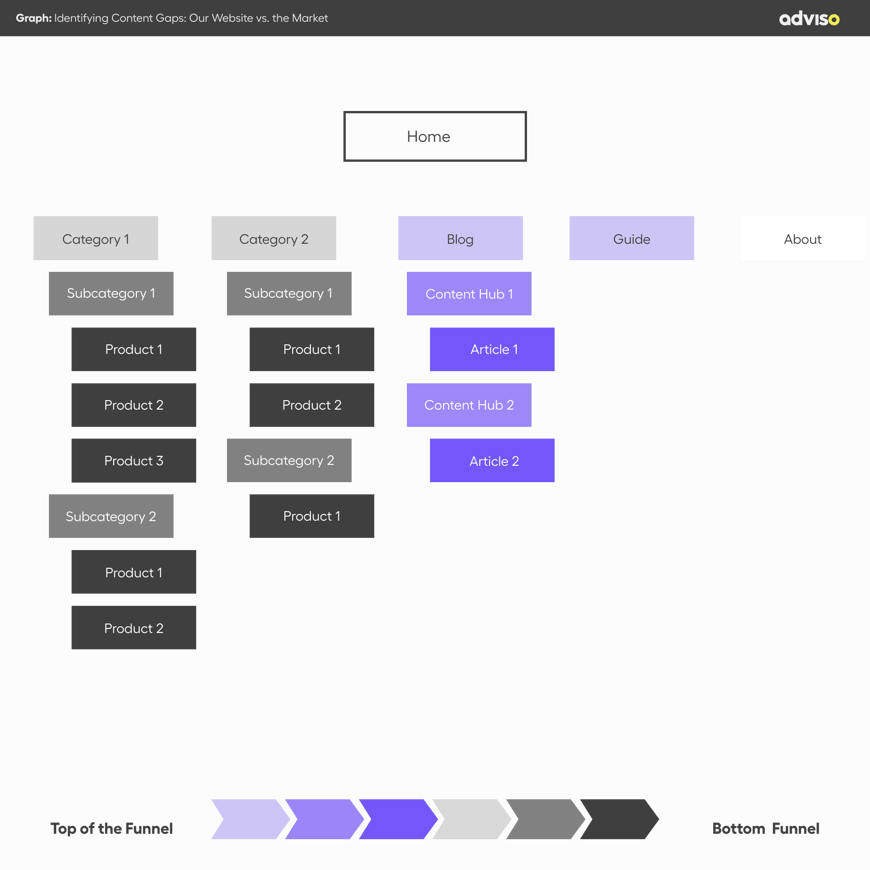
Developing Content Briefs
The objectives of a content brief include: targeting the right search intent, avoiding cannibalization, structuring content, proposing relevant CTAs and internal links, enhancing shareability, strengthening site authority, and providing expert and high-value content.
Providing an Optimal Experience through a 360 Strategy
For a seamless user experience and customer journey, various skills are essential:
- Data analysis to assess the potential of marketing actions and monitor performance.
- UX to ensure easy website use and an adapted interface.
- CRO to integrate elements necessary for conversion.
A 360 marketing strategy would also include other channels, such as media, SEM, and social networks, for optimal performance while minimizing costs.
Aligning SEO with the customer journey is crucial, as neglecting search engine optimization means ignoring the real needs of users. By combining these two aspects, users can be engaged at every stage of their journey with appropriate content, improving retention and increasing revenue.
At adviso, our team of SEO experts works in collaboration with other marketing and analytics services to provide a natural search engine optimization strategy that aligns with the reality of your business and industry, maximizing results.
—
At adviso, our team of SEO experts work closely with our other marketing and analytics departments to deliver an SEO strategy that's right for your business and industry, and maximizes results.
If you have any questions about our organic SEO methods, or would like to discuss acquisition opportunities, please contact our SEO experts. We look forward to hearing from you.
